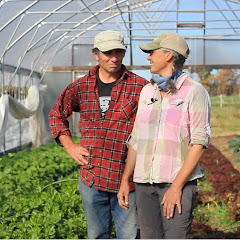So, once counted and packed, labeled and delivered, the shares become the property of the CSA. With our ‘build your own’ or ‘buffet style’ distribution method you get a lot more choice than would be available if we boxed the shares at the farm. However, as is often the case, greater freedom requires greater responsibility. Thankfully, there is a cadre of talented folks among you who have taken on the weighty responsibility of organizing the shares so that you all can get them (i.e. distribution). The City and Liberty distribution coordinators show up early, stay late, haul lots of tables and boxes around, field inquiries, and clear up confusions every week for 24 weeks. We are so very grateful to these gals (by and large, it’s the ladies, the ladies...) who put their heart and soul into their work. Next time you pick up your veggies, you can help them by remembering a few things. First, wait until setup is finished and the workers have given the ‘all-clear’ before attempting to fill your share. Or better yet, lend a hand and make it go that much faster. Make sure to check your name off the list and take the time to read the labels on the boxes. Some weeks you may take three heads of lettuce, but next week it may be only two. And finally, have fun, commune with your fellow CSAers and rejoice in the abundance of the spring season.








